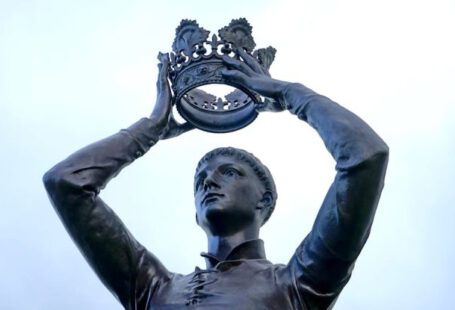The enigmatic smile of the “Mona Lisa” has captivated art lovers and scholars for centuries. Painted by the renowned Italian artist Leonardo da Vinci, this masterpiece continues to be shrouded in mystery, with various theories and speculations surrounding its creation. From the identity of the sitter to the techniques employed by da Vinci, the “Mona Lisa” remains a subject of intrigue and fascination. Let’s delve into the mysteries that surround the creation of this iconic painting.
The Identity of the Sitter
One of the most enduring mysteries of the “Mona Lisa” is the identity of the woman depicted in the painting. While it is widely believed that the sitter was Lisa Gherardini, the wife of a wealthy Florentine merchant, some art historians have put forth alternative theories. One such theory suggests that the woman in the painting is actually a self-portrait of Leonardo da Vinci in female form. Proponents of this theory point to the similarities between the facial features of the figure in the painting and known self-portraits of da Vinci.
Another intriguing theory proposes that the “Mona Lisa” is a composite portrait, combining features of different women known to da Vinci. This theory is supported by the fact that da Vinci was known to have dissected human bodies to study anatomy, giving him a deep understanding of facial structure and features. The mystery surrounding the identity of the sitter adds an air of intrigue to the painting, inviting viewers to speculate and interpret the enigmatic smile in different ways.
The Techniques and Materials Used
In addition to the identity of the sitter, the techniques and materials used by Leonardo da Vinci in creating the “Mona Lisa” have also sparked curiosity and debate among art experts. One of the most notable features of the painting is the sfumato technique employed by da Vinci, which involves the gradual blending of colors and tones to create a soft, hazy effect. This technique gives the painting its characteristic ethereal quality, with the figure of the “Mona Lisa” appearing to emerge from a misty background.
Da Vinci’s use of light and shadow in the painting is also a source of fascination for art historians. The subtle play of light on the sitter’s face and the intricate details of her dress and jewelry demonstrate da Vinci’s mastery of chiaroscuro, a technique that creates a sense of depth and three-dimensionality in the painting. The meticulous attention to detail in the “Mona Lisa” is a testament to da Vinci’s skill as a painter and his innovative approach to capturing the essence of his subjects.
The Enigmatic Smile
Of course, no discussion of the “Mona Lisa” would be complete without mentioning the enigmatic smile that has puzzled viewers for centuries. The slight curve of the sitter’s lips has been interpreted in myriad ways, with some seeing it as a sign of contentment or amusement, while others perceive a sense of melancholy or mystery. The ambiguity of the smile has inspired countless interpretations and analyses, with scholars delving into the psychology and symbolism behind this iconic feature of the painting.
Some have suggested that the smile of the “Mona Lisa” reflects da Vinci’s interest in capturing the complexities of human emotion and expression. The sitter’s gaze, directed at the viewer with a hint of knowingness, adds to the sense of intimacy and intrigue that surrounds the painting. The enigmatic smile of the “Mona Lisa” continues to be a subject of debate and speculation, inviting viewers to ponder the secrets it may hold.
In Conclusion
The creation of the “Mona Lisa” remains a source of fascination and mystery, with its enigmatic smile and subtle details inviting viewers to unravel its secrets. From the identity of the sitter to the techniques and materials used by Leonardo da Vinci, this iconic painting continues to captivate audiences around the world. The enduring allure of the “Mona Lisa” lies in its ability to evoke wonder and curiosity, encouraging viewers to engage with its mysteries and interpret its enigmatic beauty in new and unexpected ways.





